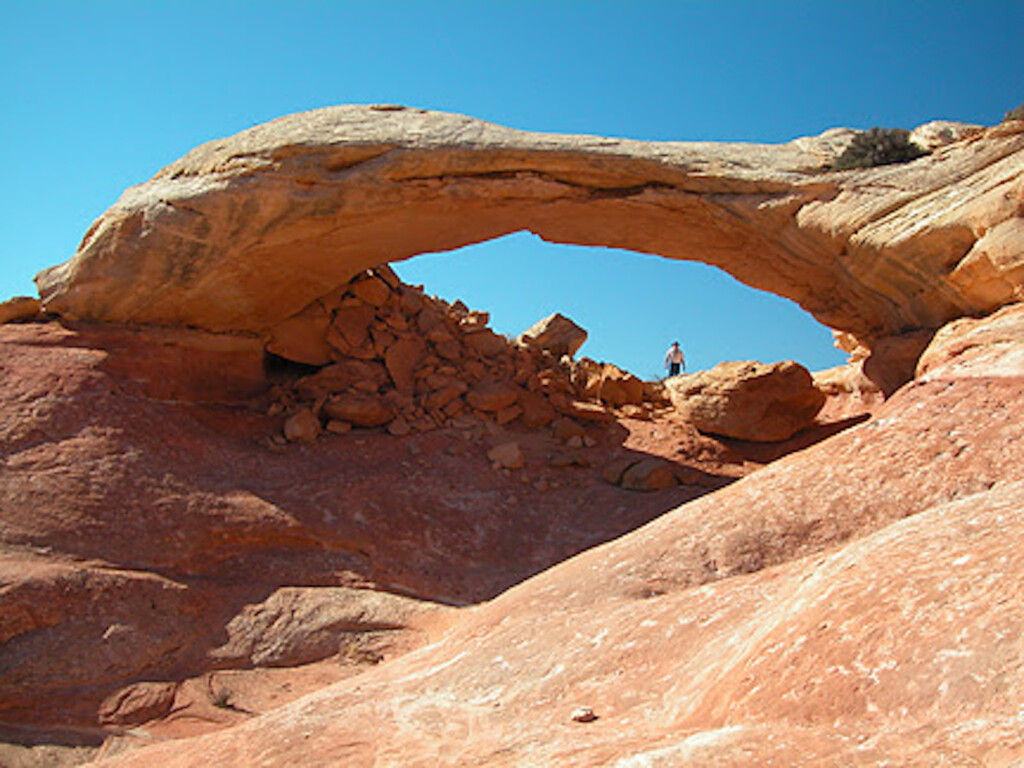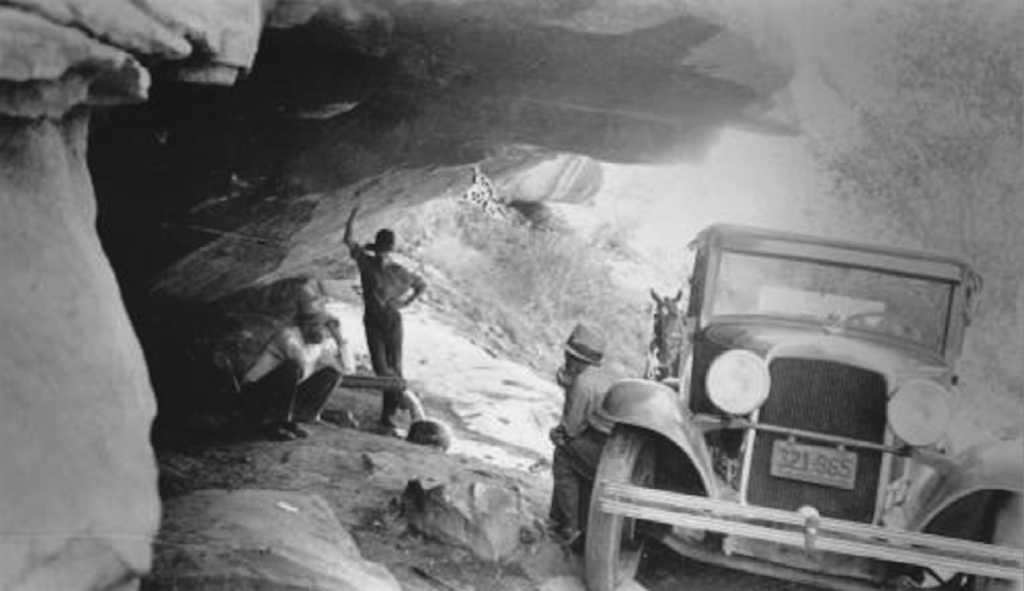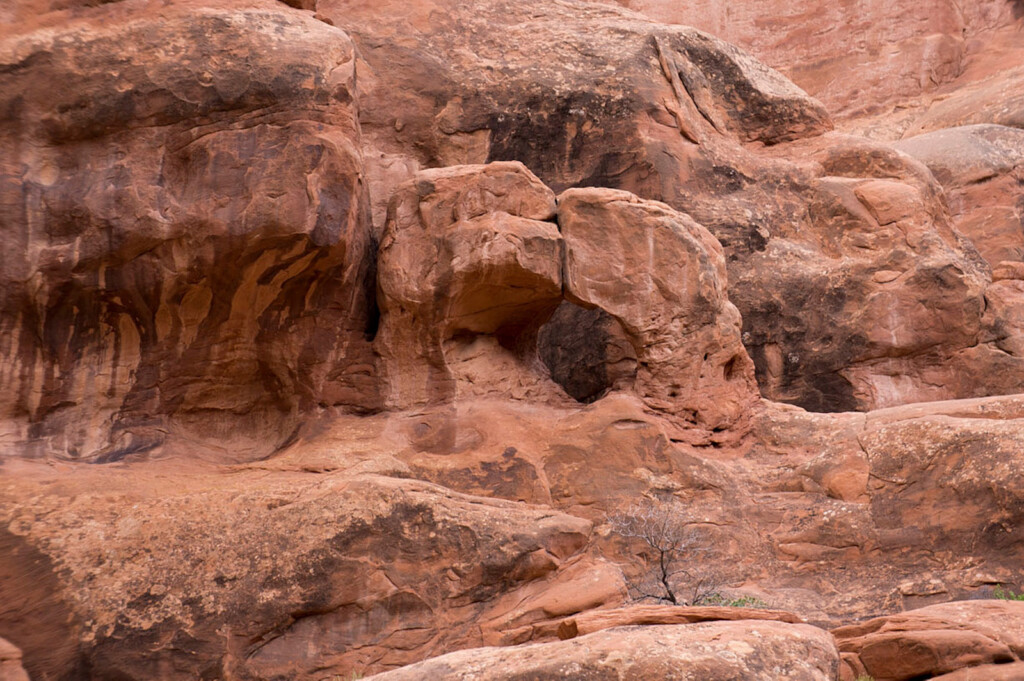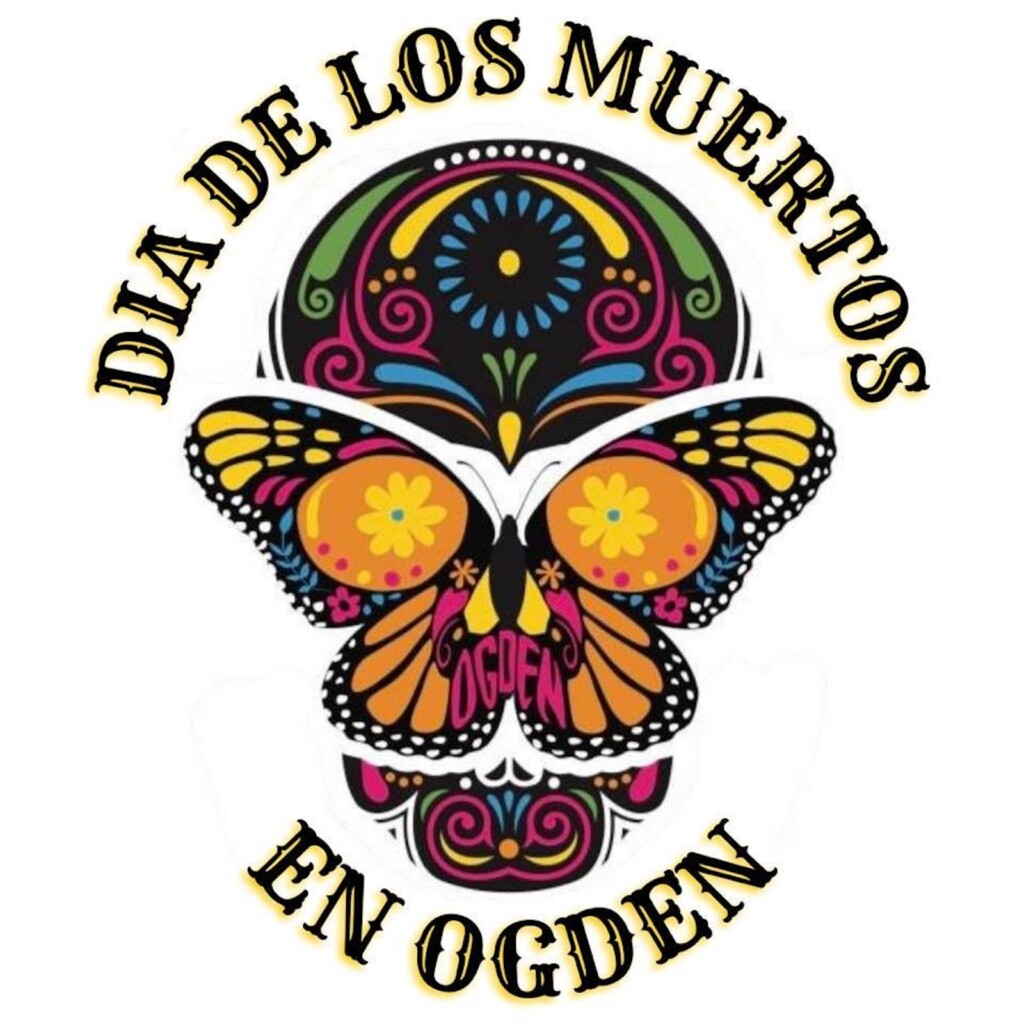Moab’s complex terrain generates a lot of names. Tagging features with a title helps orient people among the myriad canyons, towers, buttes, gullies, boulders, arches and knolls that texture the landscape.
Some features are named after people; for activities that happened near, on, or in them; or for some attribute of the feature (such as Big Flat Mesa). Towers and arches are often named for their shape, or what that shape reminds people of — and that’s often when imaginations run wild. There’s an arch called ‘Paul Bunyan’s Potty’ in Canyonlands National Park, for example, and another was nicknamed ‘Klingon Bird of Prey Arch’ in reference to the classic television show Star Trek).
Despite cooler temps, shorter days and occasional snow, February is a great time to hit the trails. In fact, a holiday-themed objective may inspire you to get outside and enjoy the peace and quiet of the off-season. And the photo opportunities are amazing!
In recognition of Valentine’s Day, here are some Moab-area features with romance-themed names that may prompt you to explore a new place on your own, with friends, or even with that special someone.
Bride Canyon
A remote rock tower near Moab reminds some observers of — you guessed it — a bride, complete with a veil and bouquet, and wearing a full-skirted gown. Its hues, however, are sandstone-buff and desert-varnish black instead of the white of a conventional wedding dress.
The tower, along with Bride Arch, is located in Bride Canyon. They’re all accessible from the four-wheel-drive Gemini Bridges Road, and there are dispersed camping sites (managed by the Bureau of Land Management) in the canyon. Hikers, bikers, climbers and motorized recreation enthusiasts all use the area.

Wedding Ring Arch
A narrow band of sandstone forming a rounded arch reminded someone of a wedding ring — maybe the person also had a marriage proposal on their mind. Perhaps they even got married there.
The arch is in the remote Salt Creek Canyon within the Needles District of Canyonlands National Park, south of Moab. Access to the trail is by dirt road.
Kissing Turtles
A permit is required to explore the Fiery Furnace within Arches National Park, a labyrinth of fins, slots and gullies where visitors may happen upon an arch feature called the Kissing Turtles. Its resemblance to two dome-shelled turtles sharing an intimate gesture is remarkable.
Hand Hold Arch
This arch may be named for its resemblance to a ladder rung, or maybe the type of handhold you would look for while rock climbing — but for Valentine’s Day, it could easily be interpreted as a symbol of affection. The arch is in Lavender Canyon, a remote area of the Needles District of Canyonlands National Park and accessed by four-wheel-drive roads.
Anniversary Arch (North and South)
This pair of arches in the Marching Men area of Arches National Park is named for a sweet story rather than the shape of the feature itself. Roby “Slim” Mabery was a head ranger in Arches National Park during the 1960s, and he and his wife Juanita “discovered” and named the arches on their wedding anniversary. (Of course, the arches had likely been seen by many people before, but the Maberys’ names have been used on maps.)
The Marching Men and surrounding features can be seen from the Tower Arch trail, accessed by unpaved roads inside Arches National Park.

Matrimony Springs
This freshwater spring trickles out of the bottom of a sandstone cliff along River Road. Locals and visitors have drunk from the spring for decades, and many people still pull over and fill up bottles and jugs (though the spring is not necessarily recommended for drinking by the health department or the Division of Water Quality. It was closed for a time in the 2000s when tests detected coliform).
The origins of the name are unknown, but some local legends surround it. One bit of lore claims that anyone who drinks from the spring will always return to Moab; another predicts that couples who drink from the spring will get married.
Valentine’s Day doesn’t have to be about traditional couples or marriage, and these sites don’t either. Maybe you’ll visit one of these features and come up with your own name or interpretation. Your alternative name won’t be used on maps, but it can be a personal waypoint to help you recall your visit (romantic or otherwise) to the Moab landscape.
Feature Image from Natural Atlas of Kissing Turtles.






